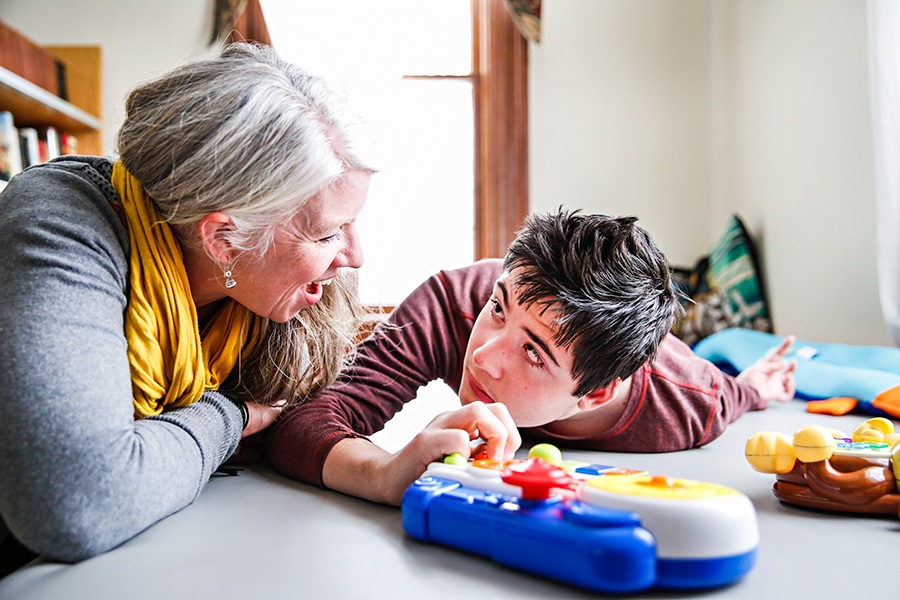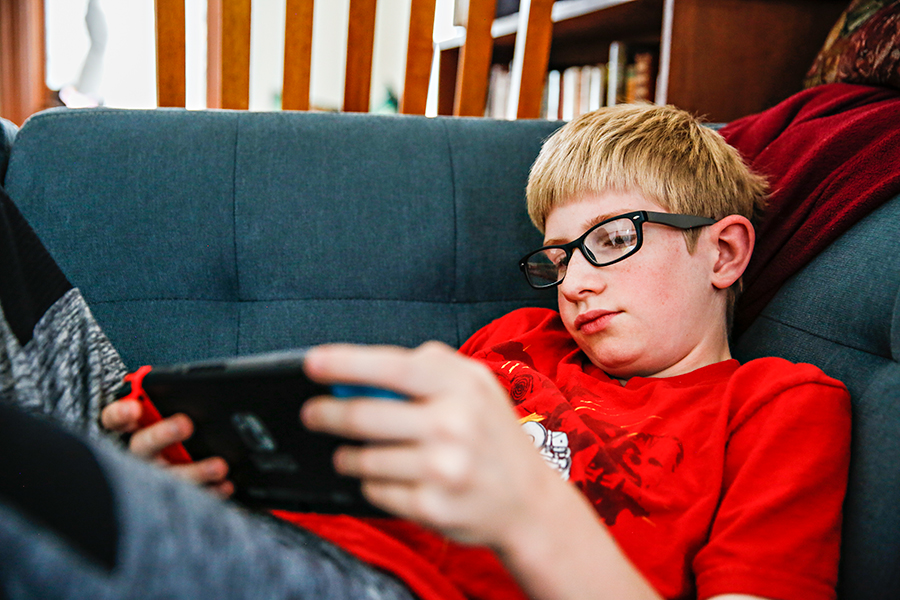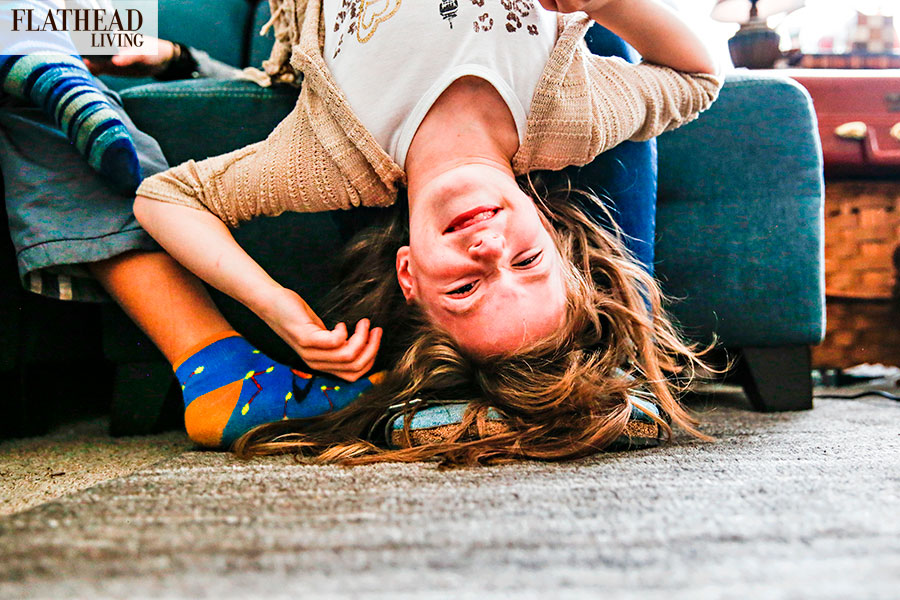One ordinary afternoon in 2008, Steve Bryan pulled his truck over to grab the mail, then headed up the hill to his house. In the mix of letters, bills, and junk mail that he plopped on the kitchen counter was an issue of Outreach magazine, a publication for Christian leaders. The Bryans didn’t subscribe to it. They’d never received an issue before, and none would come in the future.
Mary, his wife, saw the magazine in the pile and noticed that Francis Chan, the author of a book she was reading, was on the cover. “Don’t throw that one away,” she told Steve. “I want to read that article.”
After dinner, Mary sat down with the magazine. While leafing through the other stories, one in particular caught her eye.
“Steve, listen to this,” she said. “There are 143 million orphans in the world, and there are 2 billion Christians. If only 7 percent of us would adopt, there’d be no orphans.”
Those statistics struck Steve as well. “Something inside me caused me to stand up, and I said, ‘Well, we live in a Christian community. We can do something about that right here in Bigfork.’”
But life was busy. The Bryans had a 15,000-tree cherry orchard on the east shore of Flathead Lake, plus the jobs they’d brought with them from California: Mary was in high-tech sales and marketing; Steve was an investment mortgage broker. They were also caring for Mary’s elderly parents, navigating end-of-life care. Though they both felt the pull to help, and even did a little research on the state of international adoption, they simply didn’t have any margin in their life to do more.
A couple years later, though, the plight of children without families was still nagging at both of them. Mary’s parents had passed, and now that they were no longer caregivers, they had the ability to think about putting their thoughts into action. In the interim, their concern had shifted from working on the big picture of international adoption to the needs of children in the Flathead Valley. Once they started asking questions, the area of greatest urgency was crystal clear: foster families were in high demand and short supply.

Foster care has been around as long as families have lived in community with one another, and has encompassed nearly every conceivable way to shelter children whose parents are unable to care for them. Many systems from the past would be unthinkable now, such as the English Poor Law of 1562 that placed indigent children into indentured servitude to wealthy families, or the Orphan Trains of 1800s America, where destitute children from East Coast cities were sent west to new families with the hope (but very little vetting or oversight) that they would be loved as children, not exploited as free labor.
As society has evolved, so has our dedication to protecting children. In Montana, the state requires prospective foster families to go through an extensive licensing process, followed by ongoing education requirements and periodic recertification. When a family receives a child, a state child protection specialist visits at least once a month, making sure the child is safe and well cared for. When possible, the child and birth parents also maintain contact through regular supervised visits. In addition, each child has a court-appointed special advocate (CASA), a volunteer whose sole responsibility is to champion the best interests of the child in court or other planning meetings. Where well-meaning people once believed the best hope for neglected children was a ride west to a new life on a farm, the aim of today’s foster care system is reunification with some member of the extended biological family, ideally the parents.
But when things have gone badly enough to necessitate removing a child from their home, reunification can be a slow process. And removals often happen quickly. A child protection specialist needs a list of names she can call as a situation unfolds, whether it’s the middle of the night or early on a Saturday morning. And that list is never long enough.

That shortage is where Steve and Mary stepped in. In January of 2011, Child Bridge began with a mission to recruit and support foster and adoptive families. They partnered with four local churches to communicate Montana’s need and to help prospective parents enter the system prepared. Nine years later, this is still their model: a staff member presents on the urgent shortage and then has very candid conversations about the realities of foster care.
“This isn’t just about a good heart and a spare bedroom,” Mary says. “Caring for a child who is a victim of trauma is very different from caring for one who isn’t.”
Every single child in the foster care system has experienced some level of trauma. Just the act of removing a child from his or her home, without even delving into the neglect or abuse that necessitates the removal, is in itself a deeply troubling event. If a family considers these realities and decides to continue, Child Bridge will introduce them to the appropriate agency employees to start the licensing process. Child Bridge is not involved in licensing foster families or placing children. Their role is to walk alongside the families, check in on them during the process, and be an ear and a resource for questions and concerns. The recruitment side of Child Bridge happens in church, for reasons that have as much to do with practicality as the Bryans’ personal faith.
“I had a social worker ask me one day, ‘Why don’t you recruit in other places besides churches?’” Steve says. “Well, that’s where the families are together.”
There’s a lot of truth to that. In the absence of Child Bridge working a presentation into halftime of a basketball game or as the preamble to kindergarten graduation, churches are an ideal place to reach both parents at once, and that’s a critical component for fostering.
“If the husband doesn’t buy into being a foster parent, then it’ll never work in a family,” Steve says.
But the Bryans emphasize that Child Bridge welcomes any and all foster and adoptive families needing support, not just those in their faith community.
Jeff and Emmy Ort are one of those families, having fostered six children over the past nine years. Of those kids, two were reunified with their families, two were ultimately adopted by different foster families, and two are now Orts, joining the mix with their five biological children.
“Sometimes the journey of foster care and adoption is full of these highs and lows,” Emmy says. “There’s joy and then there’s deep sadness; there’s really dark and there’s light, and confusion and clarity, and it’s just a roller coaster of highs and lows.” After tearing up, she continues, “Sometimes I’ve felt like I can’t even tell my closest friends or family first, because I think they’re going to say, ‘You’re crazy,’ but I never felt like if I called Child Bridge I was going to get that line.”

Foster families need a village, so to speak, because fostering is difficult on so many different levels. As any parent knows, you can’t add a child to your home without adding extra work. But when a child comes burdened by trauma, the emotional and physical energy needed to parent them increases. And fostering also brings families in contact with the existing difficulties in the child’s birth family.
“I was raised the daughter of a police officer, so I was scared going into this process that I would feel super angry about the whole thing, like, ‘How could these parents not think about this kid?’” Emmy says. “But I’ve realized the world around me is really hurting, and it’s not just the child hurting.”
The heavy load of all that pain and damage is a lot for a foster family to shoulder alone. Child Bridge recognized from the beginning that families needed to be supported, not just recruited, in order to succeed and continue caring for children. After a family receives a foster child placement, Child Bridge’s support piece kicks into gear with the outreach and support coordinator, available to any foster family, day or night. In the Flathead Valley, that person is Trisha Kinsey. She actively serves 60-100 families at any given time, including the Orts.
“I always feel like if I don’t know who to call about something, when I call Child Bridge, they get back to me by the end of the day,” Emmy says, explaining that the organization has helped with everything from putting her in touch with other foster families dealing with the same issue to lining up extra caregivers for her son with special medical needs. “They’re our point person for all things, whether they know the answer right then or not.”
Kinsey explains that she’ll answer questions and connect families with resources or just offer encouragement in many forms, from a listening ear and a cup of coffee to prayer support or a lunch date.
“I’m an adoptive mom who didn’t have support, other than my mom and dad, so I’ve seen it from the other end,” Kinsey says.
The Bryans have been foster parents as well, and have an ongoing relationship with the young man who was a teenager in their home before reunifying with his birth mother. In fact, about three-quarters of the Child Bridge staff has a life story that involves foster care or adoption in some way: they grew up in a home that fostered, they are foster or adoptive parents, or they were foster kids themselves. They know the paths these families are walking, which has undoubtedly contributed to the organization’s growth and success. In the organization’s first six months of operation, it doubled the number of available foster families in the Flathead Valley. Word of that success quickly spread, and people started reaching out from communities across the state started. The organization expanded to Billings in 2015, followed by Missoula in 2016.
Today, it also has offices in Bozeman, Great Falls, Butte and Glendive with 21 full- and part-time staff. Across the state, 587 Child Bridge families have cared for 507 children in the last 12 months. The organization also relies on about 100 volunteers each month to provide food and child care for the other major part of Child Bridge’s family support program, the 20 family resource groups that meet monthly across Montana.

“Having that monthly resource group has made the biggest difference,” says Jacqueline Bergren of Butte. She and her husband began fostering before Child Bridge had a presence in their community, and she’s since joined the organization as the Butte outreach and support coordinator. She says that before Child Bridge came to Butte, fostering “felt isolating and lonely, because you didn’t know a lot of other foster parents. The resource group brings foster parents together, in a way we hadn’t experienced before, for community and connection. Child Bridge has made us feel very loved and supported.”
The resource groups have spread across the state as Child Bridge has grown. In the Flathead Valley, that group has gathered every month, without fail, since January 2011. Families come together to share a meal, and then volunteers provide a fun evening for all the children while the parents learn about some aspect of caring for kids who have experienced trauma. Child Bridge generally brings in outside presenters, from equine therapists to psychologists, but staff with special training also facilitate programs. It’s also an opportunity for both parents and kids to spend time with other families who may have a mix of biological, foster and adoptive children, a normalizing evening where, for a change, no one is asking questions about who belongs to whom. The Orts, who have attended since the beginning, say both they and their kids look forward to it. Jeff describes it as a chance to connect with people “who are rowing in the same direction as you.”
Emmy adds that the education piece has been invaluable. “I don’t know where we would have gotten introduced to some of the things we learn at the resource groups,” she says. “There’s no time otherwise to do a lot of late-night study on topics you really need to learn about.”
Dan Donnelly, a resource family specialist supervisor in the Kalispell office of the Montana Department of Public Health and Human Services Division of Child and Family Services, agrees that the organization fills an important niche.
“Child Bridge support meetings and education are services that are not otherwise available in the Flathead Valley,” Donnelly said. “They have been a great resource in this area for outreach and recruitment for foster care. They also provide an important support for current, former, and prospective foster and adoptive parents.”

The overarching goal of the foster care system is reunification. It’s set up to place children in safe homes until their parents are able to safely care for them again. But that doesn’t always happen. According to the Child Welfare League of America, 56 Montana kids “aged out” of the foster care system in 2015, meaning they reached adulthood without reunifying with their parents or being adopted. If they go forward into adulthood without a support system such as former foster parents or another caring adult, these young adults face high rates of homelessness, substance abuse, unemployment, early single motherhood, and incarceration.
In Montana, more foster families are always needed. According to data from the Kids Count Data Center, just under 1,800 Montana children were in foster care in 2011 when Child Bridge began, but the number grew rapidly. As of 2017, more than 3,800 children, or 17 of every 1,000 Montana kids, were in foster care. According to those numbers, Montana has the second-highest rate of kids in care in the nation, slightly fewer than West Virginia. That number that is deeply disturbing to everyone at Child Bridge.
“The system needs more families, and the families could be of any size or shape and age,” Steve Bryan says. “Take a family that might be in their 60s. I mean, who’s to say that they couldn’t care for a 15-year-old, or help guide that person into the next stage of their life?”
“We used to say that everyone can do something,” Mary says, listing ways that people can get involved even if they’re not prepared to foster: volunteering with Child Bridge, supporting a family that fosters, donating funds. “Now we really believe that everyone must do something, and that we have to refuse to do nothing.”
Katie Cantrell contributes regularly to Flathead Living. Find her at www.katiecantrellwrites.com, or on Instagram and Facebook @KatieCantrellWrites.
Read more of our best long-form journalism in Flathead Living. Pick up the winter edition for free on newsstands across the valley, or check it out online at flatheadliving.com.
